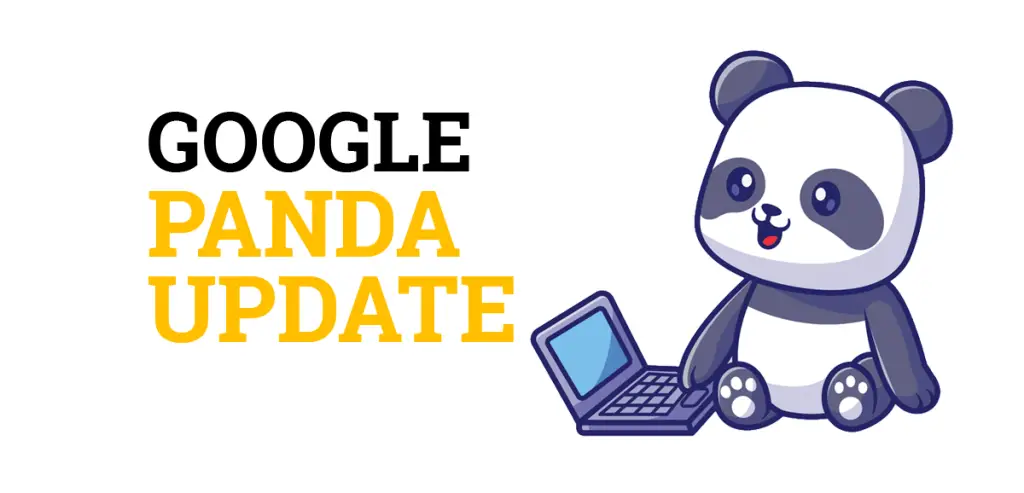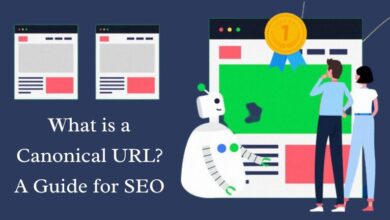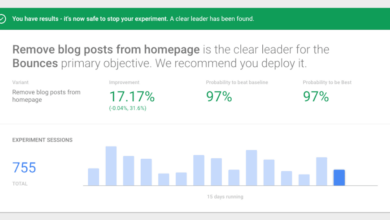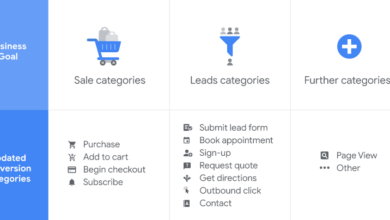
Google Panda Update A Deep Dive
Google Panda Update, a pivotal moment in search engine optimization, significantly impacted how websites were ranked. This update, with its iterations and evolving guidelines, forced website owners to rethink their content strategies and technical approaches. Understanding its history, identifying penalty signals, and learning recovery strategies are crucial for navigating the ever-changing digital landscape. This comprehensive guide delves into the core principles of the Google Panda update.
The update’s timeline, from initial release to subsequent refinements, played a vital role in shaping the search landscape. Factors driving the update’s development, such as the need for higher-quality content and user experience, are also discussed. The guide also explores how Panda affected different website types, from blogs to e-commerce sites, and the long-term implications for organic traffic.
Overview of the Google Panda Update

The Google Panda update, a series of algorithm refinements, fundamentally reshaped how Google ranks web pages. It aimed to improve search results by reducing the prominence of low-quality, thin content and websites that were perceived as manipulative or spammy. This shift prioritized sites offering high-quality, user-centric content that provided valuable information.The update’s impact was substantial, affecting the rankings of millions of websites.
Sites that had previously relied on spammy tactics or thin content saw significant drops in search visibility. Conversely, sites with high-quality content and a focus on user experience benefited from improved rankings.
Core Purpose and Impact
The Panda update’s core purpose was to improve the quality of search results. By targeting low-quality websites, Google aimed to provide users with more relevant and trustworthy information. This directly impacted search engine results, pushing sites that provided high-quality, in-depth content to higher positions, and penalizing sites with thin content, duplicate content, or other manipulative practices. This resulted in a more refined and user-friendly search experience.
Remember the Google Panda update? Well, recent news about a delayed Google Search Console index coverage report is definitely raising some eyebrows, and it’s got me thinking about potential SEO implications for sites affected by the Panda update. This could be a major factor in understanding how Google is handling the indexation of sites that were penalized by the Panda update, and whether that delay has any correlation to the recent updates in Google’s algorithm.
breaking news google search console index coverage report is delayed. It’s a bit of a puzzle, but I’m hoping this will help us better understand the current state of website optimization in the wake of the Panda update.
Timeline and Iterations
The Panda update wasn’t a single event but rather a series of iterations. Precise timelines and specific dates for each iteration are sometimes difficult to pinpoint, but the overall trend shows gradual refinement of the algorithm over time. Early iterations focused on identifying and penalizing specific types of low-quality content. Later iterations emphasized user experience, signals, and contextual understanding, resulting in a more holistic evaluation of web pages.
Factors Triggering the Development
The development of the Panda update was triggered by a number of factors. The proliferation of low-quality websites and the rise of black-hat practices were significant concerns. Google recognized the need to improve search results and provide users with more relevant and trustworthy information. This recognition led to a dedicated effort to combat these issues, resulting in the Panda update.
Comparison of Panda Update Versions
| Panda Update Version | Core Algorithmic Changes |
|---|---|
| Early Panda (initial release) | Focused primarily on identifying thin content, duplicate content, and other content-quality issues. Early iterations heavily relied on analysis. |
| Later Panda Iterations | Introduced factors related to user experience (UX) signals, including time on page, bounce rate, and engagement metrics. The emphasis shifted from solely content-based quality signals to more comprehensive site evaluations. Later versions also included measures to identify websites engaging in manipulative tactics. |
| Panda Update (most recent iteration) | The most recent iteration of Panda integrated more advanced machine learning techniques, allowing for a more nuanced and dynamic evaluation of website quality. These advanced techniques allow for a more contextual and holistic understanding of the website, going beyond basic content quality and including site architecture, user engagement, and user experience metrics. |
Identifying Penalty Signals
The Google Panda update significantly impacted websites by penalizing those deemed to have low-quality content. Understanding the signals that triggered these penalties is crucial for website owners to maintain high rankings and avoid future issues. This section delves into the common signals and the nuances of manual versus automatic penalties related to Panda.Panda’s impact was substantial, often leading to significant drops in organic search traffic for websites that hadn’t fully optimized their content.
It forced a shift towards higher quality, user-centric content strategies.
Common Signals of Panda Penalties
Understanding the indicators of Panda penalties is essential for website owners to identify and address issues that could jeopardize their search rankings. Several factors, ranging from thin content to manipulative tactics, contributed to websites receiving Panda penalties.
Remember the Google Panda update? It really shook things up for website rankings, didn’t it? A big part of staying Panda-proof is optimizing your site’s speed. Using the best pagespeed tools is key to keeping your site zippy, which Google values. This all directly impacts your visibility and success in the search results, making the Panda update’s impact still relevant today.
- Thin Content: Websites with little to no original content, relying heavily on thin content, syndicated articles, or scraped content were often penalized. This frequently included articles that were merely summaries or short snippets of information, lacking in depth and originality.
- Duplicate Content: Replicating content across multiple pages or from other websites was a key signal for Panda. This could involve identical content on different pages of the same site or the reuse of content from other sources.
- Poorly Written Content: Panda often penalized websites with content that was poorly written, lacked clarity, and did not effectively address the needs of users. This encompassed issues like grammatical errors, typos, unclear structure, and a lack of readability.
- Low-Quality Images and Videos: The inclusion of irrelevant, low-resolution, or poor-quality images and videos could be a signal for Panda. The quality of multimedia content directly impacted the overall user experience and, consequently, the website’s ranking.
- Unnatural Link Profiles: Panda scrutinized unnatural link profiles, including excessive backlinks from low-quality or irrelevant websites. These links were frequently purchased or acquired through spammy tactics, rather than earned organically.
Manual vs. Automatic Penalties
Website owners need to distinguish between manual and automatic penalties to understand the severity and required actions. A manual review process involves human judgment, while automatic penalties are triggered by algorithms.
- Automatic Penalties: These penalties are triggered by the Panda algorithm based on predefined criteria. They are often related to content quality issues such as thin content or duplicate content. These penalties are typically not as severe as manual ones, but can lead to significant drops in rankings if not addressed.
- Manual Penalties: Manual penalties are a result of a human review process by Google. This often involves a more serious issue, such as egregious violations of Google’s Webmaster Guidelines. They can include issues like content farms, manipulative linking practices, or spam.
Specific Examples of Harmful Practices
Examples of practices that could lead to Panda penalties include:
- Content Spinning: Spinning or paraphrasing existing content without adding original value. This involved minimal effort and was easily detectable by Google’s algorithm.
- Stuffing: Unnaturally stuffing pages with s, without regard to readability or user experience. This was a clear signal that the content was primarily for search engines, rather than users.
- Article Marketing Schemes: Submitting low-quality articles to article directories or other websites in an attempt to gain backlinks, often with little or no value to the user. These practices frequently led to poor-quality links that negatively impacted the site’s reputation.
Summary Table of Common Website Issues
| Website Issue | Description |
|---|---|
| Thin Content | Lacking sufficient original, in-depth information. |
| Duplicate Content | Identical or near-identical content on multiple pages. |
| Poorly Written Content | Grammatical errors, typos, unclear structure, lack of readability. |
| Low-Quality Multimedia | Low-resolution, irrelevant, or poor-quality images and videos. |
| Unnatural Link Profile | Excessive backlinks from low-quality or irrelevant websites. |
Impact on Website Rankings
The Google Panda update, a significant algorithm change, dramatically impacted website rankings across various niches. This update, focusing on high-quality content and user experience, rewarded sites with valuable content and penalized those with thin or low-quality content. Understanding its effects is crucial for website owners and professionals to maintain and improve their online presence.The Panda update fundamentally shifted the landscape of search engine optimization.
Sites that previously relied on stuffing or other manipulative tactics found their rankings plummeting, while those prioritizing quality content and user experience experienced a surge. This change forced websites to adapt their strategies and focus on providing real value to users.
Effects on Different Website Types
The Panda update’s impact varied depending on the website type. Blogs, for example, often experienced significant fluctuations, as Google scrutinized the quality of content, the originality of the articles, and the overall user experience. E-commerce sites faced scrutiny regarding product descriptions, image quality, and the overall shopping experience. News websites were assessed for the credibility of the sources, the accuracy of the information, and the presentation of the news content.
Examples of Ranking Fluctuations
Numerous websites experienced substantial ranking changes after the Panda update. For instance, blogs that relied heavily on spun content or copied articles from other sites often saw their rankings plummet. E-commerce stores with poor product descriptions and low-quality images also faced similar consequences. Conversely, blogs that focused on in-depth, original content and engaged their readers often saw improved rankings.
Long-Term Consequences of Penalties
Panda-related penalties can have long-lasting consequences on organic traffic. Websites that fail to address the underlying issues identified by the Panda update may experience a sustained decline in search engine rankings, resulting in a significant loss of organic traffic over time. This can lead to decreased revenue for businesses relying on online sales or leads. It is crucial to proactively maintain and update content to ensure continued success.
Positive and Negative Impacts on Specific Industries
The table below summarizes the positive and negative impacts of the Panda update on various industries.
| Industry | Positive Impacts | Negative Impacts |
|---|---|---|
| E-commerce | Improved product visibility for high-quality stores, increased trust from consumers. | Reduced visibility for stores with poor product descriptions or low-quality images. |
| News | Improved credibility and authority for reliable news sources. | Reduced visibility for news sources with inaccurate information or poor presentation. |
| Travel | Improved visibility for travel websites with high-quality content and useful information. | Reduced visibility for travel websites with thin content or irrelevant information. |
| Real Estate | Improved visibility for real estate websites providing accurate and detailed information about properties. | Reduced visibility for websites with misleading or outdated information. |
Recovery Strategies
Recovering from a Google Panda penalty requires a proactive and comprehensive approach. It’s not a quick fix; it demands a deep dive into your website’s content and structure, meticulously addressing the issues identified by Google’s algorithm. This involves more than just stuffing or link building; it’s about creating high-quality, user-centric content that satisfies search intent. The key to recovery lies in understanding the penalty signals, adapting your strategies, and consistently improving your website’s overall value proposition.
Content Quality Enhancement
Improving content quality is fundamental to Panda recovery. Focus on creating in-depth, comprehensive content that addresses user needs thoroughly. This means researching topics deeply, providing valuable information, and avoiding thin, superficial content. Consider user intent when crafting your content; aim to answer questions and solve problems rather than just focusing on s.
- In-depth Research: Thorough research is crucial for producing high-quality content. Understand the intricacies of your topic, explore diverse perspectives, and gather factual data from reputable sources. This ensures your content is accurate, comprehensive, and valuable to the user.
- User-Centric Content: Understand your target audience. What are their needs and interests? Craft content that directly addresses those needs and provides solutions. Focus on answering questions and offering helpful insights.
- Comprehensive Content: Avoid creating short, superficial content. Provide detailed explanations, examples, and supporting evidence to demonstrate your understanding of the topic.
Identifying and Addressing Penalty Signals
Identifying the specific signals that triggered the Panda penalty is the first step toward recovery. This involves meticulous analysis of your website’s content, structure, and technical aspects. Tools like Google Search Console and website analytics can help pinpoint areas of concern. Look for signs of low-quality content, thin content, stuffing, and other violations.
- Content Analysis: Carefully review your website’s content to identify any issues related to thin content, lack of depth, or repetition. Evaluate the relevance and value of your content from the user’s perspective.
- Technical Evaluation: Examine your website’s technical aspects, including page speed, mobile-friendliness, and overall site structure. Identify and resolve any technical issues that might be contributing to the penalty.
- Backlink Analysis: Assess the quality and relevance of your backlinks. Remove any links that are deemed spammy or low-quality. Focus on building relationships with high-authority websites to earn authoritative backlinks.
Implementing Recovery Strategies
A structured approach to recovery is essential. Develop a plan that Artikels specific actions to address the identified penalty signals and improve content quality. Regular monitoring and evaluation are crucial to track progress and make necessary adjustments.
| Issue | Diagnosis | Solution |
|---|---|---|
| Thin Content | Pages lacking depth and comprehensive information. | Expand content, add examples, and incorporate more details to meet user needs. |
| Stuffing | Excessive use of s to manipulate search engine rankings. | Remove unnecessary s and focus on natural language and user-centric content. |
| Low-Quality Content | Pages with inaccurate, outdated, or irrelevant information. | Update content, ensure accuracy, and maintain its relevance to the topic. |
Content Quality and Relevance
The Panda update fundamentally shifted Google’s focus from simply indexing content to evaluating its quality and relevance. Websites that previously relied on stuffing or low-effort content generation often found their rankings plummeting. Understanding the nuances of Panda’s evaluation criteria is crucial for long-term success.Panda prioritizes user experience. High-quality content, designed to provide value and address user needs, is rewarded.
This means focusing on creating content that is both unique and informative, rather than merely replicating existing content. It’s about offering something fresh and helpful to the reader.
Evaluating Website Content Quality
To assess a website’s content from a Panda perspective, a multifaceted approach is needed. A simple check for density is insufficient. Instead, evaluate the depth and originality of the content, its clarity, and its usefulness to the user. Consider the following elements:
- Content Depth and Originality: Does the content go beyond superficial descriptions? Does it provide in-depth analysis, original insights, or unique perspectives? Look for evidence of original research, data analysis, or expert opinions. Avoid mere summaries or paraphrases of other sources.
- Content Clarity and Readability: Is the content easy to understand? Does it use clear language and avoid jargon? Is the information presented logically and systematically? Is the formatting clean and visually appealing, aiding comprehension?
- Content Usefulness and Value: Does the content fulfill a need or solve a problem for the user? Does it provide actionable advice, practical examples, or valuable information? Is it engaging and thought-provoking?
Creating High-Quality Content
Creating content that avoids Panda penalties requires a conscious effort to produce high-quality, unique, and relevant material. This is not just about writing; it’s about crafting an experience for the reader.
- Unique Content: Avoid plagiarism or simply copying and pasting from other sources. Rephrasing existing content does not qualify as unique content. Originality lies in presenting the information in a new way, adding unique perspectives, or providing fresh insights. Use your own voice and analysis.
- Relevant Content: Ensure the content directly addresses the user’s search intent. Research the s and topics your target audience is searching for. The content should be tailored to satisfy those queries and offer a helpful answer. A relevant article on a niche topic is better than a generalized, low-value article on a broad topic.
- Helpful Content: Provide real value to the user. Address their needs and questions directly. Offer actionable advice, practical solutions, or a fresh perspective. Content that merely scratches the surface of a topic will not rank well.
Examples of High-Quality Content
High-quality content caters to user needs and provides value. Examples include in-depth tutorials, insightful analyses of complex topics, comprehensive guides, or well-researched articles.
- In-depth tutorial: A detailed walkthrough on how to use a specific software, complete with screenshots, explanations, and troubleshooting tips.
- Insightful analysis: A well-researched piece exploring the causes and implications of a current event, offering unique perspectives and supporting data.
- Comprehensive guide: A step-by-step guide covering all aspects of a specific subject, such as building a website, with practical examples and relevant data.
- Well-researched article: An article that thoroughly investigates a particular topic, using various sources to support its claims and offering a comprehensive understanding.
Ensuring Content Uniqueness and Helpfulness
The process of ensuring both uniqueness and helpfulness is iterative. It requires ongoing research, rewriting, and refinement. A consistent flow of fresh ideas and insights is key.
- Conduct Thorough Research: Gather information from multiple reliable sources. Utilize data and research to support claims and provide depth. Avoid relying solely on one or two sources. Fact-check all information to ensure accuracy.
- Rewrite and Refine: Rework content to ensure its uniqueness and value. Use your own words to convey the information, and tailor it to your audience. Proofread and edit carefully for clarity and accuracy.
- Prioritize User Experience: Focus on how the user will interact with the content. Structure it logically, use clear headings, and incorporate visuals where appropriate. Keep the language simple and avoid jargon. Ensure the content is well-organized and easy to navigate.
User Experience (UX) Considerations
User experience (UX) is more than just aesthetics; it’s a critical factor in website success, especially when it comes to Google’s Panda algorithm. A positive UX signals to search engines that your site is valuable and user-friendly, which can significantly improve your ranking. Conversely, poor UX can trigger Panda penalties, as search engines prioritize sites that offer a smooth and satisfying experience for visitors.Understanding how UX elements impact rankings during a Panda update is crucial for website owners.
This involves analyzing how visitors interact with your site, from initial landing page impressions to navigating through various content pages. Poor UX can manifest in many ways, impacting your website’s overall performance and potentially triggering penalties. Addressing UX issues proactively is key to maintaining a strong online presence.
The Role of User Experience in Avoiding Panda Penalties
User experience plays a pivotal role in avoiding Panda penalties. A well-designed website that prioritizes ease of navigation, clear content, and fast loading times tends to rank higher in search results. Conversely, a site with a poor UX, characterized by slow loading times, confusing navigation, and irrelevant content, is more likely to face a penalty. This is because Google’s algorithms assess user engagement metrics such as bounce rate, time on site, and click-through rate.
Sites with high bounce rates and low engagement signals to Google that the site is not meeting user needs.
Examples of Good and Bad User Experiences
Good user experience prioritizes clarity and efficiency. A website with a clean, intuitive design, easily accessible content, and quick loading times demonstrates a positive UX. For instance, a website with a clear sitemap, logical category structures, and prominent calls to action (CTAs) allows users to easily find what they need. A visually appealing and well-structured blog with relevant content that encourages readers to stay on the site is another example of a positive UX.
Conversely, a poorly designed website with a cluttered layout, slow loading speeds, and confusing navigation creates a negative UX. For example, a site with pop-up ads that obstruct content or a website with broken links and inconsistent design elements can lead to a negative user experience.
How a Website’s Overall UX Can Influence Its Ranking During the Panda Update
A website’s overall UX significantly influences its ranking during the Panda update. Sites with a positive UX tend to rank higher because they provide a seamless and enjoyable experience for visitors. This positive experience is reflected in metrics like time spent on site, pages viewed, and click-through rates. Sites that perform well in these metrics are rewarded by search engines with improved rankings.
Conversely, websites with a poor UX, characterized by high bounce rates and low engagement, are penalized.
Comparing and Contrasting UX Elements
| UX Element | Penalty Potential | Improved Ranking Potential |
|---|---|---|
| Navigation | Confusing, difficult-to-navigate menus; broken links; inconsistent layout; missing sitemap | Clear, intuitive menus; logical category structures; easily accessible content; consistent layout; prominent sitemap |
| Content Structure | Irrelevant content; poor grammar and spelling; lack of headings and subheadings; insufficient use of images or multimedia | High-quality content; well-written and engaging; clear and concise; appropriate use of headings and subheadings; relevant and engaging images and multimedia |
| Page Load Speed | Slow loading times; excessive use of images or multimedia without optimization | Fast loading times; optimized images and multimedia; use of caching and compression |
| Mobile Friendliness | Poor mobile responsiveness; slow mobile loading times; non-intuitive mobile design | Responsive design; fast mobile loading times; intuitive mobile design |
| Visual Design | Cluttered layout; distracting visuals; poor color schemes; inconsistent branding | Clean layout; visually appealing; appropriate use of colors and fonts; consistent branding |
Technical Practices

Technical is the backbone of a website’s visibility and performance in search engine results. Proper technical implementation directly impacts how Google’s crawlers interact with your site, influencing its ranking in organic search. By addressing technical elements, websites can ensure they meet Google’s quality guidelines and avoid penalties, including those associated with the Panda update. A robust technical foundation creates a user-friendly experience and a platform for high-quality content to shine.Technical practices are crucial for ensuring your website is not only discoverable by search engines but also adheres to Google’s quality guidelines.
This includes optimizing elements that are not directly visible to users but significantly affect a website’s overall performance and rank. Panda-compliant websites excel in technical , showcasing a smooth user experience and a strong foundation for effective content delivery.
Site Speed Optimization, Google panda update
Site speed is a critical factor in user experience and search engine rankings. Slow-loading pages lead to higher bounce rates, a key signal that Google uses to assess site quality. Websites that prioritize site speed are generally perceived as more user-friendly, which positively impacts search engine rankings. Optimizing images, using a content delivery network (CDN), and leveraging browser caching techniques are essential for improving site speed.
Utilizing efficient server resources and minimizing HTTP requests are also vital components of a speedy website. Improved site speed translates directly to better rankings and a more positive user experience.
Ever wondered about the Google Panda update’s impact on online strategies? It significantly altered SEO landscapes, pushing websites to prioritize high-quality content. Interestingly, Devika Mathrani, chief marketing officer at Wells Fargo, devika mathrani chief marketing officer at wells fargo , has a keen understanding of adapting marketing strategies in the digital age. This, in turn, highlights the importance of adapting SEO tactics to align with Google’s ever-evolving algorithms for sustained success.
Mobile-Friendliness
Google prioritizes mobile-friendly websites. Mobile-friendliness is now a ranking factor and is essential for Panda compliance. A website that is not mobile-friendly may experience a drop in rankings. A mobile-friendly website provides a seamless and intuitive browsing experience across all devices. This ensures a positive user experience, contributing to higher rankings and minimizing the risk of Panda penalties.
Responsive design and ensuring proper viewport settings are crucial for a positive mobile experience.
Crawlability and Indexability
Ensuring your website is easily crawlable and indexable by search engine bots is fundamental. Search engines need to be able to access and understand the content on your website. Technical issues that hinder crawling, such as broken links, server errors, or poor sitemaps, can negatively impact rankings and even trigger Panda penalties. Proper sitemaps, including XML and HTML sitemaps, and the use of robots.txt files can help guide search engine crawlers to your content.
Regularly checking for crawl errors and addressing any issues is crucial for maintaining a positive standing with search engines.
Technical Issues Leading to Panda Penalties
| Technical Issue | Explanation |
|---|---|
| Slow Page Load Times | Slow loading times lead to high bounce rates, a key signal of poor quality. |
| Poor Mobile-Friendliness | A website that is not mobile-friendly negatively impacts user experience, affecting rankings. |
| Broken Links | Broken links hinder the smooth navigation of users and crawlers, signaling a poorly maintained website. |
| Crawling Errors | Search engine bots unable to access or process website content. |
| Poor Site Structure | Complex or confusing website structures lead to difficulty for users and search engines. |
| Duplicate Content Issues | Duplicate content, even in small sections, can cause ranking problems and penalty. |
| Incorrect Robots.txt | A misconfigured robots.txt file can prevent search engines from accessing important pages. |
| Missing or Incorrect Sitemaps | Missing or incorrectly formatted sitemaps can mislead search engine crawlers. |
| HTTPS Issues | Lack of HTTPS security can negatively impact rankings and user trust. |
Current Relevance and Future Implications
The Google Panda update, released in 2011, significantly impacted the search engine optimization () landscape. Its focus on high-quality, user-centric content continues to resonate today, influencing not only practices but also shaping the evolution of Google’s search algorithms. While specific penalties might differ, the core principles remain vital.The Panda update’s emphasis on quality and relevance continues to be a cornerstone of Google’s search algorithm.
Websites that prioritize providing valuable, well-researched content, along with a positive user experience, are still favored. This enduring relevance is due to Google’s persistent goal of providing users with the most helpful and informative results.
Continuing Relevance in Today’s Search Landscape
The Panda update’s core principles of content quality and user experience remain highly relevant in today’s search environment. Google’s constant algorithm refinements build upon these foundations, ensuring that search results remain useful and reliable. Sites focused on thin content, stuffing, or misleading information are still penalized, demonstrating the enduring importance of quality content.
Influence on Current Practices
The Panda update has profoundly influenced current practices. professionals now prioritize creating high-quality, original content that addresses user needs effectively. This shift has encouraged a move away from solely focusing on technical aspects towards comprehensive content strategies that offer real value. Content marketing has become a key aspect of strategies, with emphasis on creating user-friendly content.
Examples of Shaping Future Google Search Algorithms
The Panda update has served as a precedent for subsequent Google algorithm updates. Its emphasis on content quality and user experience has influenced the development of algorithms like Penguin (focus on links), Hummingbird (natural language processing), and RankBrain (machine learning). The overarching goal of improving search quality and providing relevant results has been the driving force behind these updates, showcasing the impact of the Panda update.
Impact on Other Search Engine Updates
| Search Engine Update | Impact of Panda |
|---|---|
| Penguin (2012) | Panda’s focus on quality content informed Penguin’s emphasis on high-quality backlinks. Both updates highlight the importance of avoiding spammy and manipulative tactics. |
| Hummingbird (2013) | Panda’s user-centric approach influenced Hummingbird’s focus on natural language processing, enabling Google to better understand user intent and provide more relevant results. |
| RankBrain (2015) | Panda’s principle of quality content and user experience has been fundamental in developing RankBrain’s machine learning capabilities. The emphasis on quality is integral to Google’s AI-driven search results. |
Ending Remarks: Google Panda Update
In conclusion, the Google Panda update remains a significant milestone in history. Its emphasis on quality content, user experience, and technical best practices continues to shape search engine optimization strategies. By understanding the update’s core principles, website owners can proactively adapt and optimize their sites for success in today’s search environment. Ultimately, adhering to the principles of Panda can lead to higher rankings and sustained organic traffic growth.





